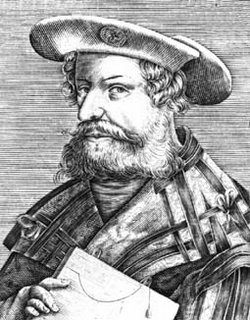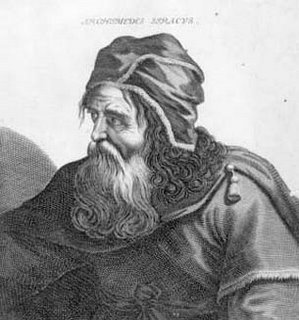 Claudius Ptolemy was born around 85AD in Egypt. He lived during a time of Hellenized Egypt but very little is known of his personal life.
Claudius Ptolemy was born around 85AD in Egypt. He lived during a time of Hellenized Egypt but very little is known of his personal life.His reputation rests on his unprecedented contributions to astronomy and geography and to the controversy that these works later caused as astronomers reacted to the famous work by Copernicus. In Ptolemy's universe, the earth sits at the center.
Ptolemy lived in Alexandria, Egypt. We know very little of his education. He mentions the astronomic data of Theon the mathematician who was probably Theon of Smyrna, one of his teachers. Many of his early works are dedicated to Syrus who may have also been one of his teachers.
Many of Ptolemy's major works still exist. His magnus opus is the Almagest which is Arabic for "the greatest". Its original name was the Mathematical Compilations. The Greeks soon started calling it The Greatest Compilations. Later on, the Arabic version became the basis of the Latin translation which is why Ptolemy's work is largely known as the Almagest.
The Almagest was one of Ptolemy's earliest works. It presents the Greek theory about the motions of the Sun, the moon, and the planets. This stood as the standard text on astronomy until Copernicus released his heliocentric theory in 1543.
It is a very ambitious work. Ptolemy writes (taken from MacTutor Biography):
We shall try to note down everything which we think we have discovered up to the present time; we shall do this as concisely as possible and in a manner which can be followed by those who have already made some progress in the field. For the sake of completeness in our treatment we shall set out everything useful for the theory of the heavens in the proper order, but to avoid undue length we shall merely recount what has been adequately established by the ancients. However, those topics which have not been dealt with by our predecessors at all, or not as usefully as they might have been, will be discussed at length to the best of our ability.His geocentric astronomic model was based on Aristotle even though Aristarchus of Samos had argued for a heliocentric model. After presenting this model, he then introduces trigonometric models to predict the motions of the orbits. He presents tables of chords (which are similar to the sine function) and uses the concept of "epicycles" (circles-within-circles) to model the planetary movements. It is his theory of planets which is his greatest contribution. In his day, there were only 5 planets recognized and he presented detailed mathematical models for explaining their motions.
Although Hipparchus gets credit for much of the theory that Ptolemy presents, it is Ptolemy who was able to apply that theory to the planetary data.
The historian Toomer wrote (from MacTutor web site):
As a didactic work the "Almagest" is a masterpiece of clarity and method, superior to any ancient scientific textbook and with few peers from any period. But it is much more than that. Far from being a mere 'systemisation' of earlier Greek astronomy, as it is sometimes described, it is in many respects an original work.There have been many who questioned whether Ptolemy deserves his reputation for being the greatest astronomer of his day. Tycho Brahe noticed that all of Ptolemy's star catalogue data was consistently off by 1 degree longitude. Although Ptolemy claimed that he had gathered the data. Brahe believed that Ptolemy had copied the data from another source. Some scholars have argued that Hipparchus is the true genius and Ptolemy merely copied Hipparchus's work. It is very hard to assess the truth of any of these claims since almost of all of Hipparchus's work is lost.
Regardless of these criticisms, it is undeniable that Ptolemy played the lead role in the geocentric theory of the solar system that ruled the day until the publication of Copernicus's famous work. Hipparchus may be the father of trigonometry but it is Ptolemy who became the lead voice in the application of trigonometry to the motions of the planets, sun, and moon.
References
- Biography of Ptolemy, MacTutor





















